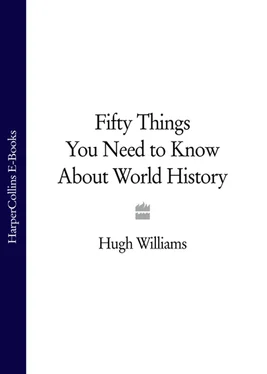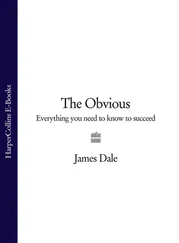Spartacus almost certainly knew that he could not destroy the institution of slavery. His rebellion was not an attempt to change the system. He just wanted to be free, probably to get home to the country from which he had originally come and lead a life where he did not belong to someone else. That is why his rebellion has become an enduring symbol of freedom. Spartacus could never have won, but in his attempt to be liberated, however briefly, from the bonds of slavery he expressed a hope understood by all people who want to be free.
Uncle Tom’s Cabin by Harriet Beecher Stowe is probably the most famous novel about slavery ever written. It had an enormous impact when it was first published in America in 1852 because it explained the lives of slaves in human terms. Its style may now seem sentimental, but its message is still strong and clear. Reading it more than a hundred and fifty years after it was written awakens a spirit of anger and astonishment at how civilised men and women could rub along with a system of such iniquity. In one scene a trader, ferrying his slave cargo down river to the South, sells a baby to another man without the mother’s knowledge. When she finds out she is distraught. ‘The trader,’ writes Harriet Beecher Stowe, ‘had overcome every humane weakness and prejudice … The wild look of anguish and utter despair that the woman cast on him might have disturbed one less practised; but he was used to it … ‘ The passage ends with the words: ‘You can get used to such things, too, my friend.’ Written 2,000 years after the Spartacus rebellion it is a sobering reminder of how slavery has endured throughout the history of mankind.
CHAPTER 2
The Burning of Jan Hus 1415
Jan Hus was a priest and teacher from Bohemia, which today forms the Czech Republic and Slovakia. In 1415 the Catholic Church condemned him to be burned at the stake for his heretical views. He was one of the first Europeans to die in the struggle for liberty of thought.
When I was at school I was encouraged to view the world more widely through the debates and lectures organised by the Masaryk Society. It had been founded by a headmaster shortly after the Second World War in an effort to bring his traditional public school into the twentieth century. He named it after one of the most remarkable men in modern European history – Thomas Masaryk, the first President of Czechoslovakia. Masaryk was born in 1850, in a small town called Hodonin about 170 miles south-east of Prague. He began his working life as a teacher and philosopher, became the leader of his country in exile during the First World War and succeeded to its presidency when the Austro-Hungarian Empire collapsed in 1918. ‘We can judge nations, including our own, quite impartially,’ he once said. ‘We need not worship the nation to which we belong.’ This careful, rational approach to nationhood was founded on his deep love for his country and its history. He understood where his people had come from and how they had been shaped by events. They might have suffered as possessions of an empire but their desire to be free remained. It had been with them for 500 years, ever since Jan Hus had gone to his death rather than renounce his beliefs.
By the beginning of the fifteenth century, the administration of the Catholic Church in Europe had begun to enter the long, slow period of decline that would lead to the Reformation a hundred years later. To those who governed the Church the signs of decay were barely visible. The idea of any secession from its teachings was unthinkable. Christianity led from Rome had enjoyed triumphant progress ever since the first Christian Roman Emperor, Constantine, had, in 313 ad, ordered that persecution was to cease and Christianity tolerated. Having captured the Roman Empire, Christianity spread across Europe, its influence thwarted only in the Middle East where, after the death of Mohammed in 632, Islam became the preferred religion. At the end of the eleventh century, the papacy began a series of crusades against Islam in an attempt to take back control of places it believed were central to its religious authority. Ultimately they failed. By the time Jan Hus began to explain his interpretation of the Scriptures, Christian influence was largely contained within Western Europe, blocked from further expansion by the presence of Islam in North Africa, the Levant and Eastern Mediterranean and the Black Sea and the Balkans.
The European papacy saw itself as all-powerful.
The European papacy of the Middle Ages saw itself as all powerful. In 1208, Pope Innocent III issued an interdict against England’s King John because the King had refused to accept his nomination for Archbishop of Canterbury. For a Godfearing people, an interdict was a serious imposition. It prevented them from observing everyday religious rites associated with such things as baptisms and funerals without which they were unprotected from salvation. In 1302, Pope Boniface VIII issued a bull entitled ‘Unam sanctum’ – a declaration of supreme Church power. It said that there was no salvation outside the Church and that those who resisted the Pope were resisting the law of God. Boniface felt the need to reassert the authority of his office because the French King, Philip IV, had begun to raid the Church for taxation and undermine the jurisdiction of ecclesiastical courts. The conflict between King and Pope resulted in Boniface’s capture and detention. Six years after he died, in 1303, the papacy moved from Rome to France, ending up in Avignon where it would remain for more than seventy years. Although housed in papal territory – Avignon was not part of France – the papacy inevitably fell under French influence. All the popes who took office during the period of the Avignon papacy were French.
Power Corrupts
One of the most famous aphorisms in the whole of historical writing was composed directly as a result of a discussion about the medieval papacy. In the 1880s the cleric and scholar, Mandell Creighton, later a Bishop of London, published a History of the Papacy during the Period of the Reformation. Creighton was lenient in his judgements of the policies and actions of the medieval Catholic Church. Describing the trial of Jan Hus, for instance, he acknowledged that Hus ‘had first deliberately asserted the rights of the individual conscience against ecclesiastical authority’, but added that it was ‘useless to criticise particular points in his trial. The Council was anxious for his submission and gave him every opportunity to make it.’ This careful, temporising approach irritated another scholar of the age, Lord Acton. In a famous letter to Creighton he told him that he could not accept the idea that popes and kings should not be judged like other men. He went on: ‘Power tends to corrupt and absolute power corrupts absolutely. Great men are almost always bad men, even when they exercise influence and not authority.’ Acton believed that what he called ‘the inflexible integrity of the moral code’ was essential to the study of history. If debased history ‘ceases to be a science, an arbiter of controversy, a guide of the wanderer, the upholder of that moral standard which the powers of the earth, and religion itself, tend constantly to depress’.
Political instability began to undermine the papacy. The Avignon court lived well: to many people it appeared to prefer the luxurious trappings of an earthly life to the spiritual requirements of religious devotion. A splendid new palace was built, the number of wealthy officials needed to administer papal business grew and the Church became richer as it sought, not only to establish its presence in its new home, but to look after the territories and possessions it had left behind in Italy. One of the Avignon popes, Clement VI, believed that largesse increased papal prestige. ‘No one ought to retire discontented from the presence of a prince,’ he said. ‘My predecessors did not know how to be popes.’ Such comfortable grandeur might have reassured the papal hierarchy, but it worried many of its subjects. Franciscan friars compared Avignon to the captivity of the Israelites in Babylon. Matters worsened when in 1378 Pope Gregory XI decided to return to Rome. After his death, the French cardinals refused to accept his successor, the first Italian pope since the exodus to Avignon, and moved back to France where they elected an alternative pontiff, called the Antipope. For nearly forty years the Church was divided by the Western Schism. The rulers of Europe took sides, supporting either the popes elected by Rome, or those chosen by Avignon. It was against the background of this confused, highly political situation that Jan Hus began to question the behaviour of the Church.
Читать дальше












